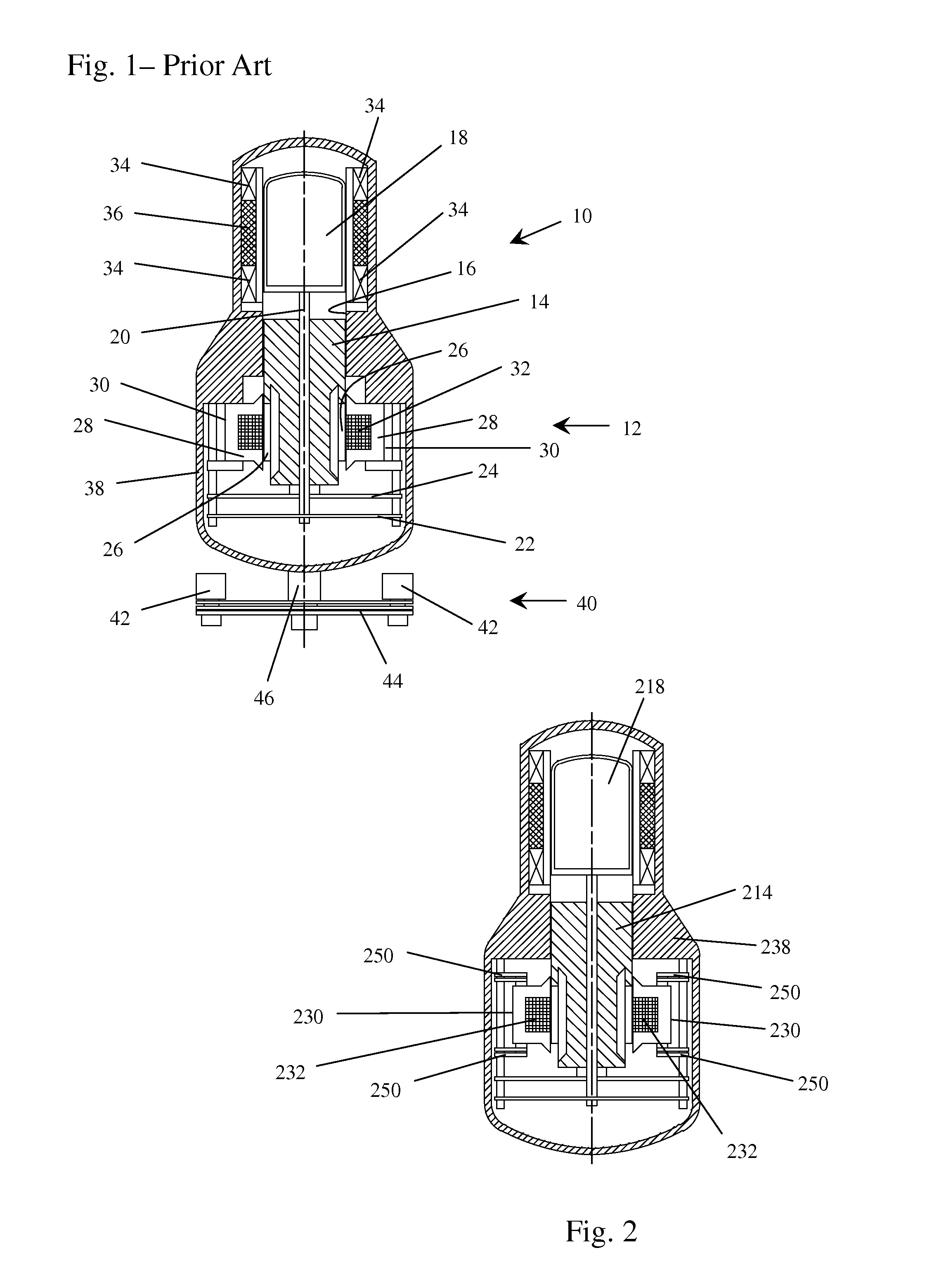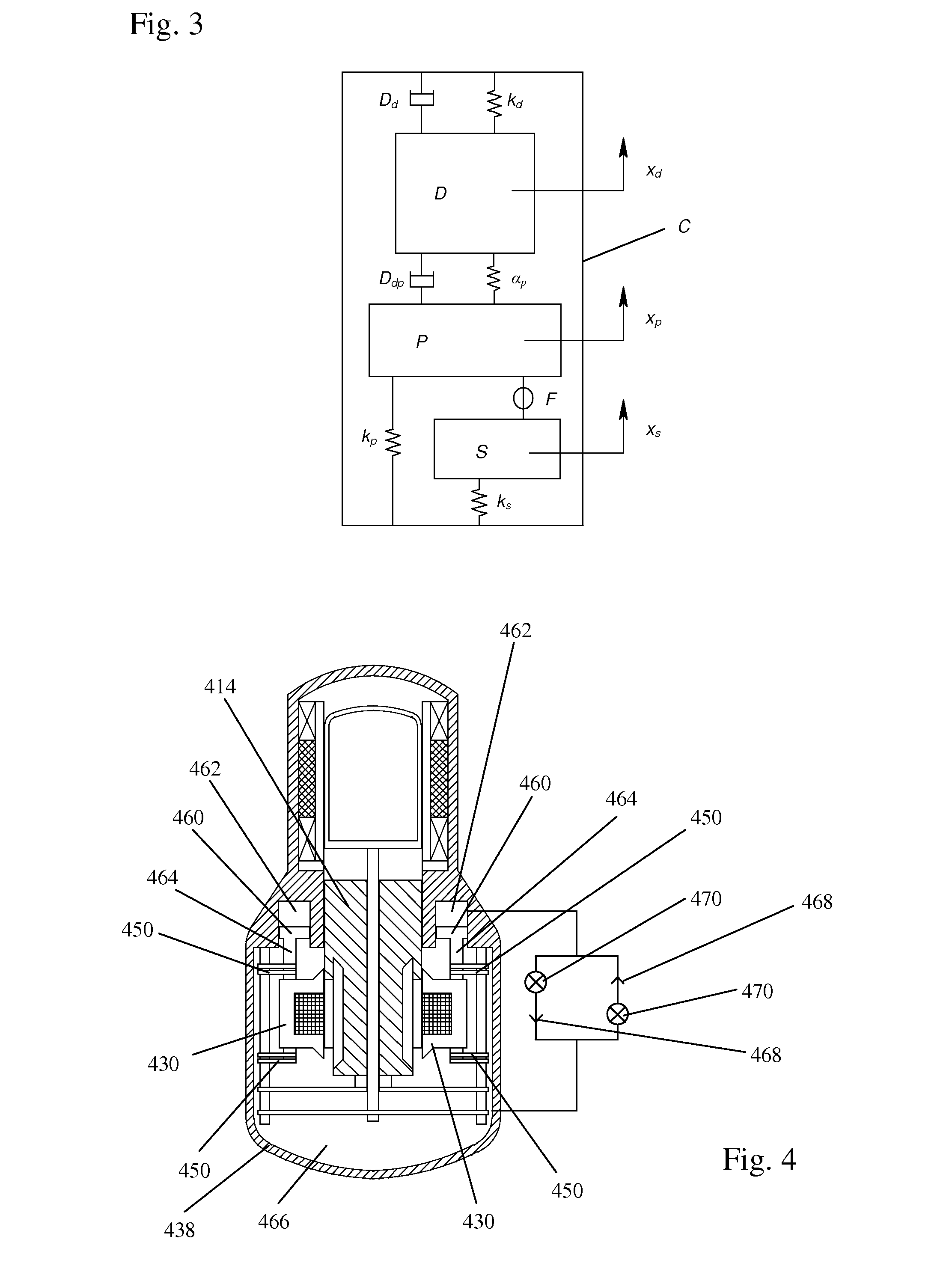Resonant stator balancing of free piston machine coupled to linear motor or alternator
a free-piston stirling cycle, linear motor technology, applied in the direction of dynamo-electric machines, electrical apparatus, control systems, etc., can solve the problems of increasing the weight and increasing the cost and volume of combined and linked stirling machines. , to achieve the effect of reducing vibration, minimizing or eliminating vibration
- Summary
- Abstract
- Description
- Claims
- Application Information
AI Technical Summary
Benefits of technology
Problems solved by technology
Method used
Image
Examples
Embodiment Construction
[0029]Basic Vibration Balancing
[0030]FIG. 2 illustrates the basic invention. The components illustrated in FIG. 2 are like those in FIG. 1 except as described or obvious to a person skilled in the art from this description. In the embodiment of FIG. 2, the stator 230 is mounted to the interior of the casing 238 through interposed springs 250. This permits the stator to reciprocate and flex the springs 250 during operation of the Stirling machine and coupled linear motor or alternator. The stator itself becomes an oscillating mass that reciprocates along the axis of reciprocation that is common to the power piston 214 and the displacer 218 including the masses that are attached to and reciprocate respectively with each. Although FIG. 2 illustrates the use of mechanical springs for connecting the stator 230 to the casing 238, other types of springs may also be used as previously described. As a result, the stator 230 simultaneously serves both as the stator of a linear motor or altern...
PUM
 Login to View More
Login to View More Abstract
Description
Claims
Application Information
 Login to View More
Login to View More - R&D
- Intellectual Property
- Life Sciences
- Materials
- Tech Scout
- Unparalleled Data Quality
- Higher Quality Content
- 60% Fewer Hallucinations
Browse by: Latest US Patents, China's latest patents, Technical Efficacy Thesaurus, Application Domain, Technology Topic, Popular Technical Reports.
© 2025 PatSnap. All rights reserved.Legal|Privacy policy|Modern Slavery Act Transparency Statement|Sitemap|About US| Contact US: help@patsnap.com



